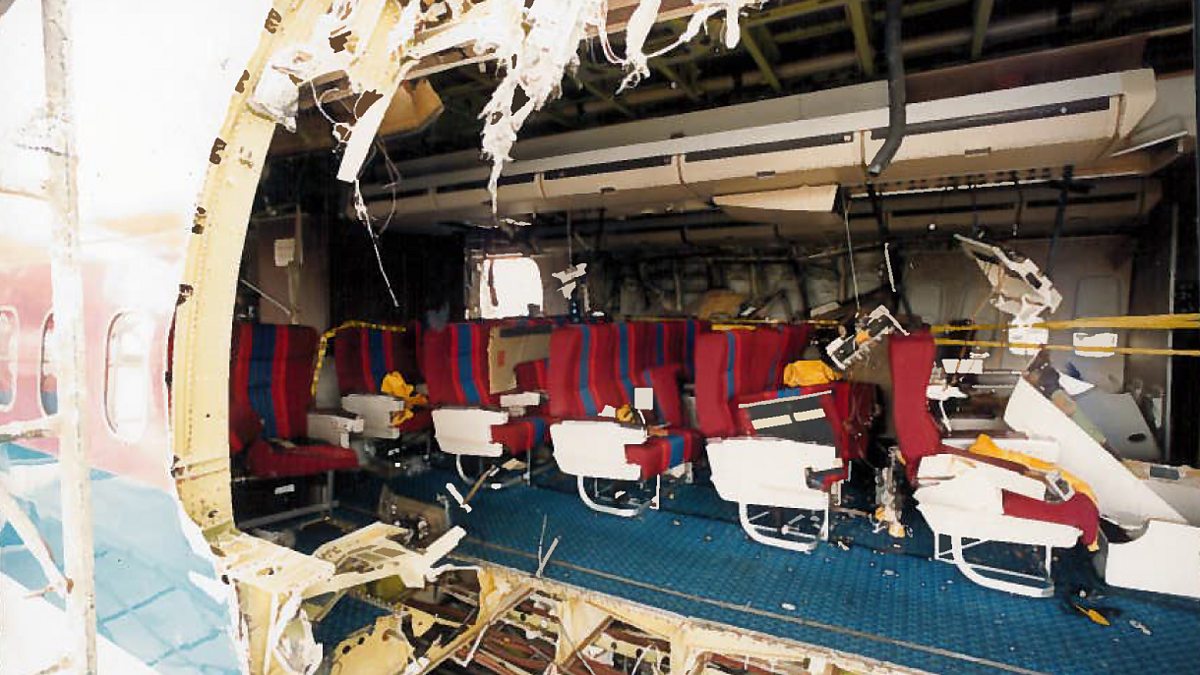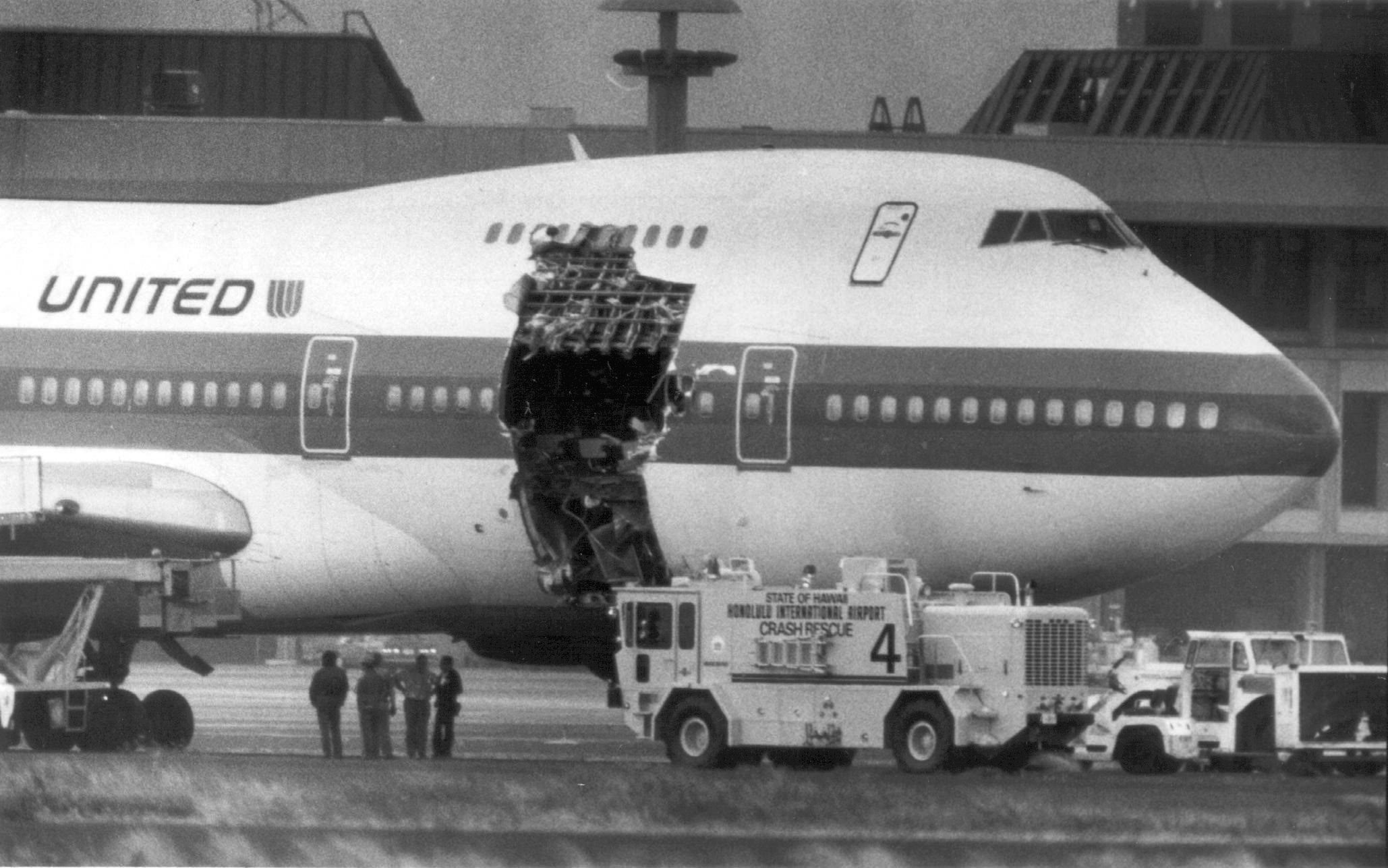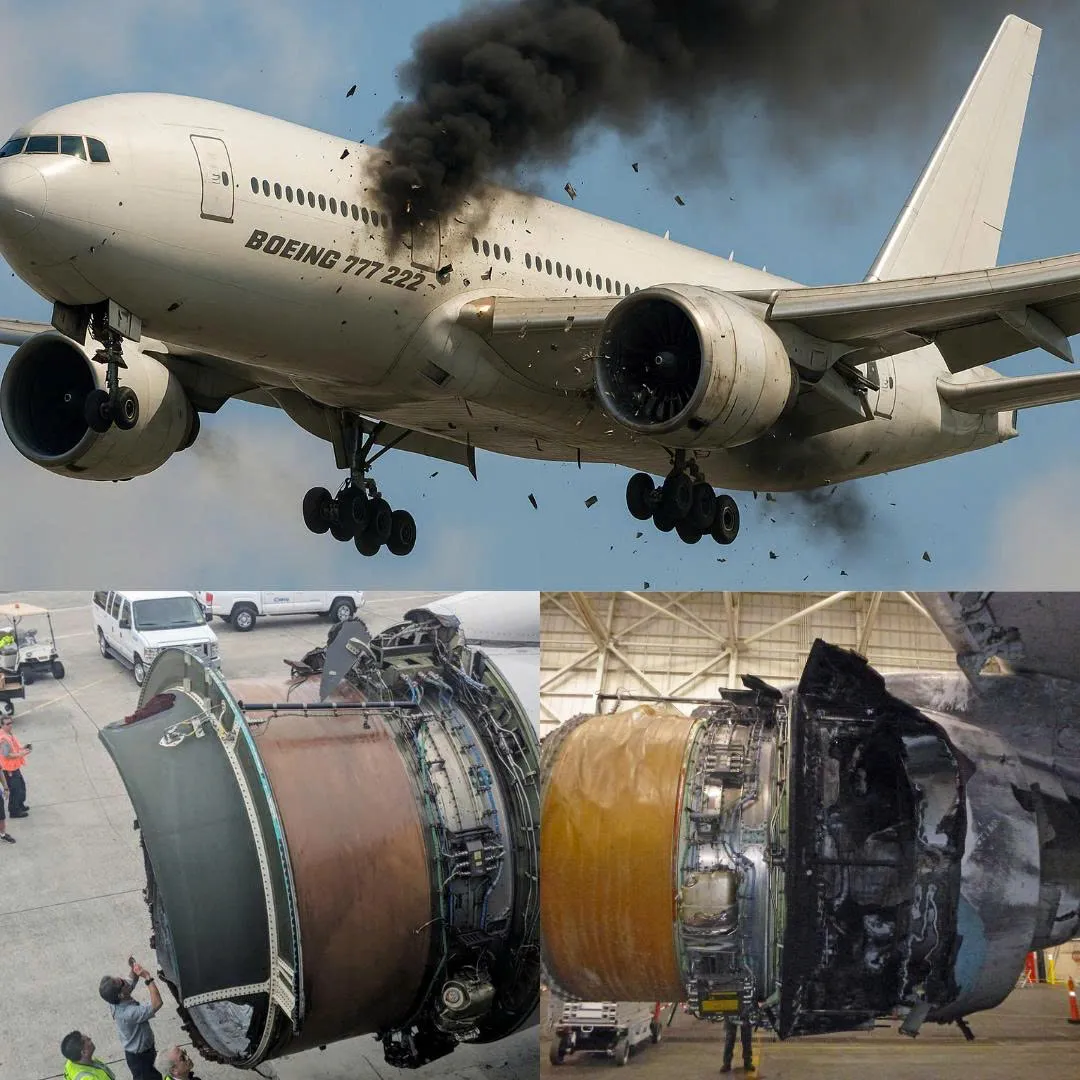
On February 24, 1989, a nightmare unfolded over the dark Pacific Ocean that would leave its survivors and the aviation world forever scarred. United Airlines Flight 811, a Boeing 747, was bound for Auckland, New Zealand from Honolulu, Hawaii, carrying 337 passengers and 18 crew members.
What began as an ordinary flight turned into one of the most harrowing incidents in aviation history. A massive explosion tore open the side of the aircraft at 22,000 feet, triggering a series of catastrophic events that would push the crew’s skills to the limit.
The scene that unfolded was nothing short of a living nightmare. The explosion sent a deafening sound through the plane, followed by a rapid decompression so severe that everything not securely fastened was sucked out of the aircraft.
The devastation was immediate. In the chaos, nine passengers were ejected from the aircraft, and the remaining passengers and crew faced the terrifying prospect of crashing into the Pacific Ocean.
However, it wasn’t just the explosion that posed a deadly threat—the critical systems of the aircraft were failing, and the pilots had to make life-or-death decisions to save the lives of everyone on board.
Captain David Cronin, who had been with United Airlines for over 30 years, was at the helm of Flight 811. With more than 28,000 hours of flying experience, he was one of the airline’s most seasoned pilots.
His co-pilot, Gregory Slater, with 14,500 flight hours, and flight engineer Randall Thomas, with 20,000 hours, made up a well-experienced team. Despite their expertise, none of them were prepared for the series of emergencies that would unfold within the next minutes.
As the aircraft began its climb out of Honolulu, everything seemed routine. The crew was aware of some turbulence and deviations from the weather radar, but there was no indication of the horror that would soon unfold. However, when the explosion occurred at 22,000 feet, all of that changed. The force of the explosion created a massive hole in the side of the aircraft, causing rapid depressurization.
Oxygen masks dropped down, but to the crew's horror, they were ineffective. The aircraft’s oxygen system had been compromised, and without the necessary air supply, the crew struggled to breathe. In those critical moments, Captain Cronin’s instinct was to dive the aircraft to a more breathable altitude, but the plane’s engines were on fire, and controlling the aircraft was proving increasingly difficult.
The horror didn’t end there. The aircraft’s number three engine, located on the right wing, had been severely damaged in the explosion. It was vibrating uncontrollably, and the crew was forced to shut it down, leaving the plane with only three working engines.
As they attempted to descend to a safer altitude, they noticed that the fourth engine was also failing. With two functioning engines and a severely damaged aircraft, the pilots had to think quickly, knowing they were still 100 kilometers away from Honolulu.
As the crew grappled with the aircraft’s failing engines and systems, their situation grew dire. The first officer declared a Mayday to air traffic control, informing them that they had suffered an explosive decompression, and they were attempting to return to the airport.
The plane, now overweight due to the full load of fuel and passengers, was struggling to stay in the air. The pilots, now flying a severely compromised 747, began dumping fuel to lighten the aircraft, hoping it would slow the rate of descent toward the ocean.

With every passing minute, the situation worsened. The passengers were terrified, many witnessing the horrors unfolding outside their windows. As the plane descended toward the ocean, it became increasingly difficult for the crew to control.
The damaged fuselage and wings, coupled with the asymmetry of the aircraft’s thrust, caused the plane to veer off course. The pilots were faced with the very real possibility of crashing into the ocean, where survival would be uncertain at best.
Despite the overwhelming odds, Captain Cronin and his team pressed on. They carefully maintained airspeed, dumping fuel as quickly as they could to reduce the aircraft’s weight. However, the question remained: would they make it back to Honolulu? The aircraft’s structural integrity had been severely compromised, and no one knew if it could withstand the strain of landing.
As they neared the runway, the crew faced another critical decision: the landing gear. The explosion had damaged the plane’s landing gear mechanism, and the pilots feared it might not deploy. When they attempted to lower the gear, they held their breath as the green indicator light confirmed that it was working.
The runway was in sight, but landing the crippled aircraft at a much higher speed than usual was a daunting challenge. With limited control and an aircraft that was struggling to stay airborne, every second counted.
The plane landed safely on Honolulu’s longest runway, with Captain Cronin and his crew guiding it in with remarkable skill. As the aircraft came to a stop, the crew ordered an evacuation. The 328 surviving passengers were able to leave the plane in just 45 seconds.
Tragically, the nine passengers who had been sucked out of the plane during the explosion were never found, their fates sealed by the catastrophic decompression.

In the aftermath, investigators initially considered the possibility of a bomb, but this theory was quickly ruled out. Instead, the investigation uncovered a more troubling issue. It was discovered that the forward cargo door, which had been improperly sealed, was responsible for the explosion.
A malfunction in the door’s locking mechanism caused it to open mid-flight, creating the massive hole in the fuselage. The investigation revealed that Boeing had received numerous complaints about similar issues with the 747 cargo doors, but no corrective measures had been taken.
Two years after the incident, further investigation by the parents of one of the victims, Kevin and Susan Campbell, revealed a disturbing trend in the design flaw of the cargo door locking mechanism.
The Campbells, whose son Lee had been on the flight, uncovered evidence suggesting that the malfunction was due to faulty electrical wiring in the door’s locking mechanism. They were able to prove that the 747 had suffered from this issue long before Flight 811’s disastrous flight.
The Campbell’s persistence led to significant changes in aircraft safety. In the years following the investigation, Boeing implemented a redesign of the 747 cargo door locking system to prevent future failures. The tragic events of Flight 811 highlighted the importance of safety protocols and the need for manufacturers to act swiftly in addressing known risks. Since the changes were made, no similar incidents have occurred on Boeing 747s.
Flight 811 remains one of the most terrifying incidents in aviation history, not only because of the immediate danger but also because of the systemic issues it exposed. However, the bravery and expertise of Captain Cronin and his crew, who made critical decisions under extreme pressure, saved the lives of hundreds of people.
The legacy of Flight 811 serves as a reminder of the importance of vigilance, maintenance, and the unpredictable nature of flight, as well as the resilience of those who are forced to make life-or-death decisions when facing the unimaginable.



